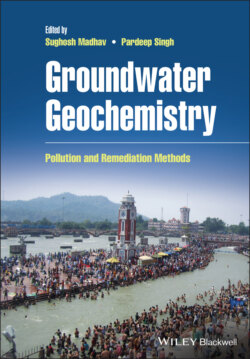Читать книгу Groundwater Geochemistry - Группа авторов - Страница 67
3.2 Problem of Salinity
ОглавлениеSalinity refers to the amount of soluble salts in water and soils, mostly of ions such as Na+, Cl−, SO42−, HCO3−, K+, NO32−, and F− (Imadi et al. 2016; Artiola et al. 2019). It is likely to be one of the major issues that affect the world economy in the near future, especially in drylands. Figure 3.1 represents the world map showing countries with salinity issues. Salinity could be either natural or human‐induced. Weathering of minerals, sea breeze (mainly in coastal areas), and capillary rise of saline water from lands of low water tables are the natural factors. This can be further accentuated by irrigated agriculture, intense fertilization, and seawater intrusion due to critical groundwater overdrafts, which are human induced. It is a serious issue affecting crop production worldwide. Abrol et al. (1988) reported that more than 932.2 million hectares of the world's fertile land are at risk due to salinization which makes the arable lands unusable for farming. According to UNEP (1992) (cf. FAO‐ITPS‐GSP 2015; Shahid et al. 2018) 1030.1 million hectares of the world's arable land were affected by salinity. About 20–50% of the world's arable land is salt‐affected and degraded (Pitman and Läuchli 2002; Glick et al. 2007). The current scenario of land degradation could be much higher than previously thought.
Figure 3.1 World map showing countries with salinity issues.
